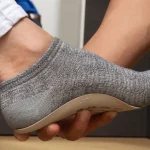When reviewing vendor sales results from the third quarter the market looked like it still had a bit of life when the economic woes centered on higher fuel prices and the housing implosion had yet to reach Wall Street. This may be the best quarter the market will see for at least a year as the economic outlook becomes increasingly dire and Holiday sales come in far softer than originally expected.
With the last of the third quarter reports now filed with the SEC, Sports Executive Weekly presents a wrap-up of industry public company results presented in the charts on pages 4 and 5. Results are posted for those companies that have reported results for the period ended closest to the end of September. Because the report is not a total picture of the entire industry, SEW feels the total numbers are less significant than the trending information provided in the percentage increases and decreases.
On a consolidated basis, reported third quarter vendor sales increased 11.2%, an increase that was a bit deceiving due to growth from acquisitions, currency exchange rate differentials and a jump in owned-retail for many brands. Those top-line benefits cost the bottom-line a bit as decreased margins and increased costs caused a decline in overall net income. Also worrying is a 10.9% jump in consolidated inventories.
The third quarter, more than any other in recent memory, shows a sharp dichotomy between consolidated Softgoods vendor results and consolidated Hardgoods results as consumers dialed back purchasing to the bare essentials, likely choosing to re-use last years equipment, though still needing a new pair of shoes.
Softgoods net sales increased 12.5% for the third quarter as strong growth at Deckers (+52.5%) and Nike (+16.7%) more than offset heavy declines at Heelys and Crocs. Aside from the external market forces, this quarter could almost be seen as a return to normalcy as the fads that had artificially boosted sales numbers over the past few quarters truly came to their end and major acquisitions, like adidas/Reebok, have seen their anniversary.
Apparel and athletic footwear vendors both posted mid-teens sales growth for the third quarter, but softer results from outdoor footwear vendors (up 2.2% on a consolidated basis) offset some of that growth. The declines at Crocs slowed the outdoor segment sales growth.
Crocs dragged overall Softgoods margins growth back to flat to last years level. For the most part, Softgoods vendors focused on maintaining profitability without depending on leveraging sales growth.
If anything, the 4.9% decline in Softgoods vendor net income is actually slightly rosier than the more realistic non-GAAP number. Using pro forma numbers provided by Quiksilver that exclude write-down charges related to the Rossignol business in the year-ago quarter, consolidated softgoods vendor net income would have declined 10.3% for the third quarter. The only other notable one-time charge in the current quarter were the write-downs at Crocs which amounted to approximately $100 million. Those charges hampered consolidated bottom-line growth by just over five percentage points, largely offsetting the Quiksilver write-downs in the year-ago quarter.
Worrying in the face of the dismal Holiday sales reported thus far was a 12.8% increase in Softgoods inventories. Part of the inventories increase can be attributed to Deckers, where inventories increased 79.4% for the quarter, as the company prepared for a strong Holiday season for the UGG brand.
Though the Softgoods side of the business had some bright spots that could show possible positives for the year ahead, the picture was much bleaker on the Hardgoods side. Sales increased 4.5% for the third quarter, but when using pro forma numbers supplied by Jarden to account for the acquired K2 and Pure Fishing businesses, net sales increased just 0.5% for the quarter. The majority of the Hardgoods vendors tracked in the chart on page 5 showed sales declines for the quarter, suffering as consumers dialed back on equipment expenditures, which in turn forced retailers to do the same. The lone upside in Hardgoods was the bicycle market, which saw strong double-digit gains throughout the summer.
Further dampening the quarter for Hardgoods vendors were increased costs of doing business which lead to a 240 basis point decline in consolidated gross margins. Nautilus and Aldila both jump out as faring particularly poorly on the margin line. Increased raw material costs, including rising steel and oil prices, were seen as the culprits here.
The margin declines caused consolidated net income to plummet. A pair of notable one-time charges including a $43.5 million charge taken by Johnson Outdoors and a $15.4 million charge taken by Brunswick led to the 55.2% drop seen in the chart on page 5, but even excluding these charges, consolidated net income still declined 16.2% for the third quarter.
Facing the worries of a recession somewhat earlier than the Softgoods vendors likely needed, Hardgoods vendors did manage inventories more tightly, producing an overall decrease of 2.2% for the third quarter. Most of the increases in individual inventories came from golf vendors as they gear up for the season ahead. Those increases were largely offset by a sharp decline at Nautilus.















